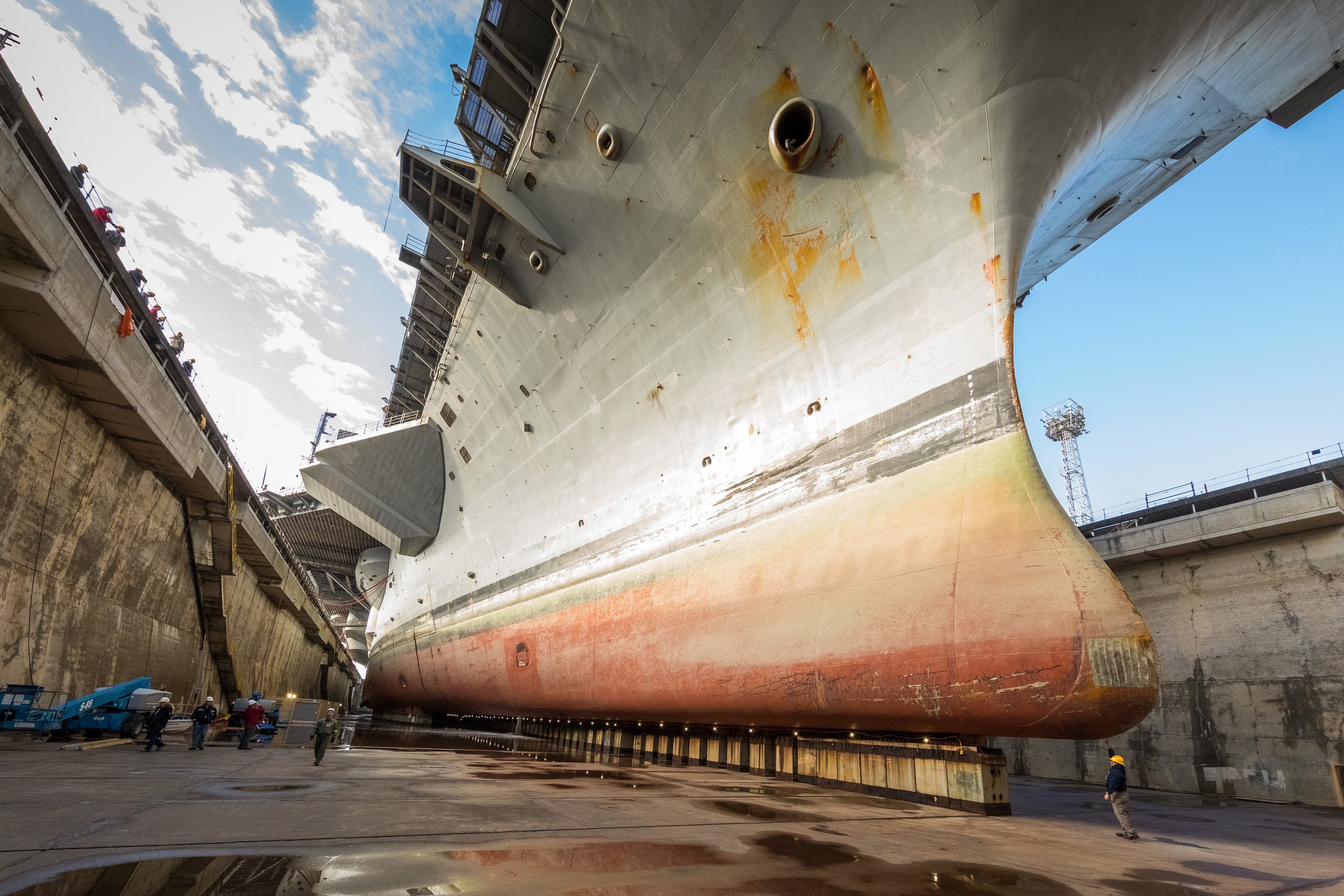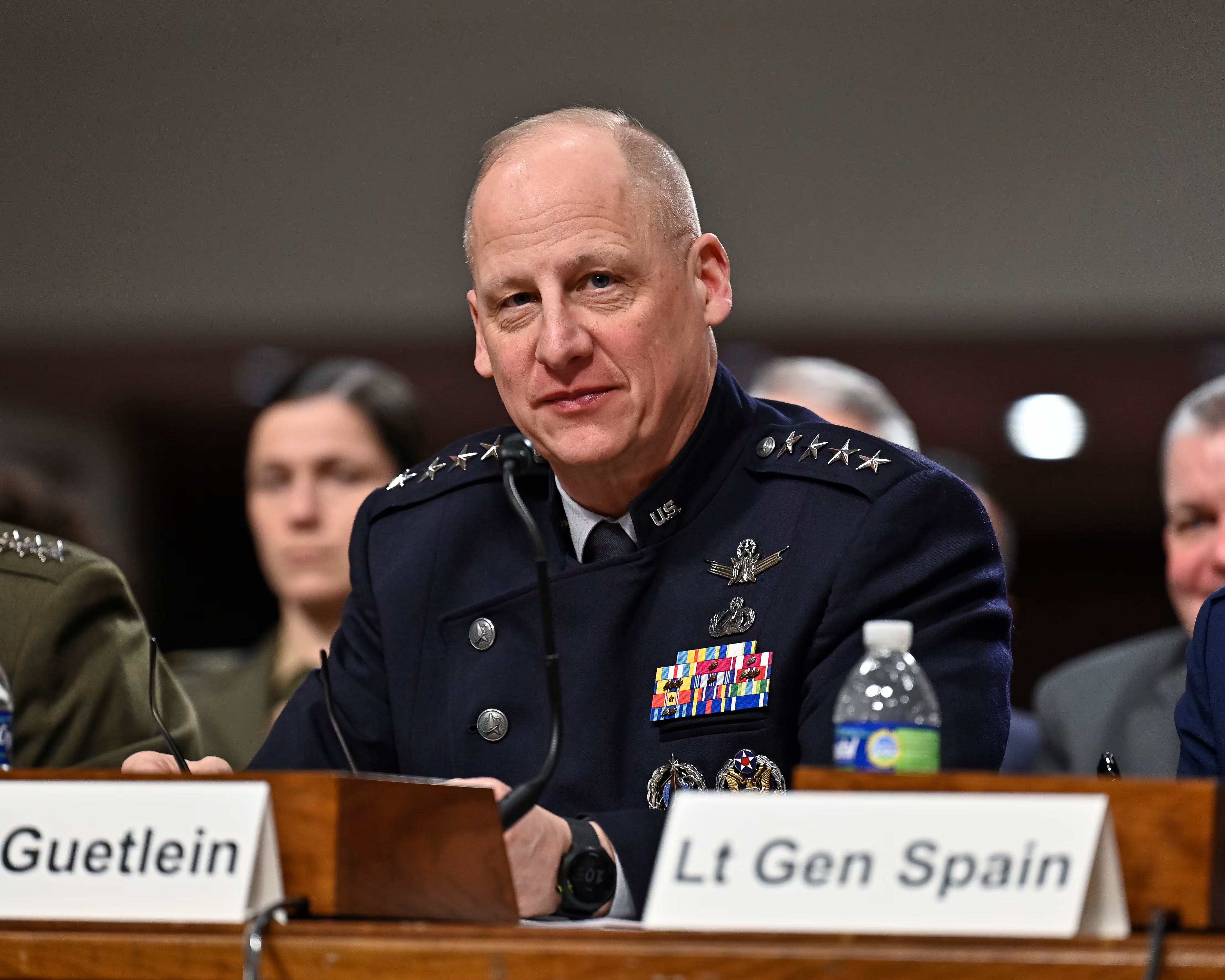WASHINGTON -- The U.S. Navy is reworking its tenuous plan to revitalize its public shipyards, where the fleet’s nuclear maintenance is done, as it has become clear that the facilities can’t meet the needs of the current fleet, let alone accommodate a growing fleet.
The head of Naval Sea Systems Command, Vice Adm. Bill Galinis told the House Armed Services Committee readiness subcommittee that the Navy is studying how much money it would need to accelerate its ongoing 20-year, $21 billion plan to recapitalize its four public shipyards by five or ten years.
To go faster and meet the needs of a growing fleet, the Navy is trying to determine how to juggle ship maintenance and repair work with renovations of aging dry docks and equipment associated with its Shipyard Infrastructure Optimization Plan, or SIOP. That may require extra funding, Galinis said.
RELATED

Arguing that lengthy ship repairs and maintenance backlogs are straining the fleet, Virginia Democratic Rep. Elaine Luria, who serves as vice chair of the House Armed Services Committee, and other lawmakers pressed the Navy on ways to improve, including expanding the use of private shipyards to supplement work at government-owned dry docks.
In response, Galinis said the Navy had all the laws required to fix the situation, but said he needed more money.
“I said I did not need any additional authorities, I did not say I didn’t need any additional resources,” Galinis said in an exchange.
Questions about the Navy’s 2018 SIOP surfaced almost immediately when it became apparent that the Navy’s $21 billion plan’s price tag was at best a rough guess.
Last year, the Heritage Foundation’s Maiya Clark released a report detailing the extent of the issues with the plan, not least of which is that it if everything went perfectly it would still not sufficiently expand shipyard capacity to service even today’s fleet, let alone a fleet with a growing number of nuclear-powered attack submarines.
“The SIOP is based on the current nuclear fleet, but it does not quite even meet the requirements of the current fleet,” the report read. “(It would make up for 67 of 68 missed maintenance availabilities, the missed availability being a submarine deactivation.) While this would be a massive improvement for the shipyards, it leaves little margin for unscheduled emergent work and does not allow for a potentially larger or different nuclear fleet in the future.”
In his testimony, Galinis acknowledged that the Navy would need to expand its infrastructure and lean more heavily on the private sector to accommodate the growing submarine force structure. In the meantime, the Navy is “taking a hard look” at which work can be outsourced to private machine shops as a way to increase capacity, Galinis told House Seapower Subcommittee Chair Joe Courtney, D-Conn.
“I applaud the fact that NAVSEA is going that route,” Courtney said.
Taking stock of dry docks
Lawmakers with big ship maintenance interests in their districts have been keenly interested in the Navy’s shipyard revitalization plans.
Earlier this week, Washington Democratic Rep. Derek Kilmer, a member of the House Appropriations Committee, led a letter urging President Joe Biden to prioritize funding for SIOP in his upcoming budget and in future years, as the plan transitions from the research and planning stages into execution.
Readiness Subcommittee Chair John Garamendi, D-Calif., helped secure a $90 million funding line for SIOP in the defense policy bill Congress passed in December. On Friday, he wanted to know if the public shipyards would be sufficiently modernized to maintain future platforms like Columbia-class submarine, due to enter service in 2031.
“I am concerned that the Navy will not dedicate the necessary resources to prioritize this effort and that a 20-year time horizon is too long to support a changing fleet,” Garamendi said of SIOP.

In her report, Clark noted that many of the Navy’s dry docks are not suitable for the task of even maintaining the current fleet. For example, many dry docks that can currently service the Los Angeles-class attack submarines are wholly inadequate for the newest class.
“The Navy’s attack submarines have also evolved, but the dry docks that service them have not: 17 dry docks can service older Los Angeles-class submarines, but only 12 can accommodate their replacement, the Virginia-class submarine, and only seven can service the newest Block V Virginia-class submarine, which is 83 feet longer than earlier variants and displaces an additional 2,400 tons,” the report reads.
Chief of Naval Operations Adm. Michael Gilday in December acknowledged the dry dock shortfalls and said that that the Navy considers the SIOP effort a “high priority,” adding that the service plans to invest nearly $1 billion in military construction dollars per year across the four shipyards.
“These dry docks on average, as you know, are over 100 years old and we’ve neglected them for too long,” he said. “And this is a strategic decision by the department to make this a priority and put the money where we need to, or we can’t sustain the fleet of the future. As you know, we’re challenged to sustain the fleet that we have now.”
Joe Gould was the senior Pentagon reporter for Defense News, covering the intersection of national security policy, politics and the defense industry. He had previously served as Congress reporter.
David B. Larter was the naval warfare reporter for Defense News.








